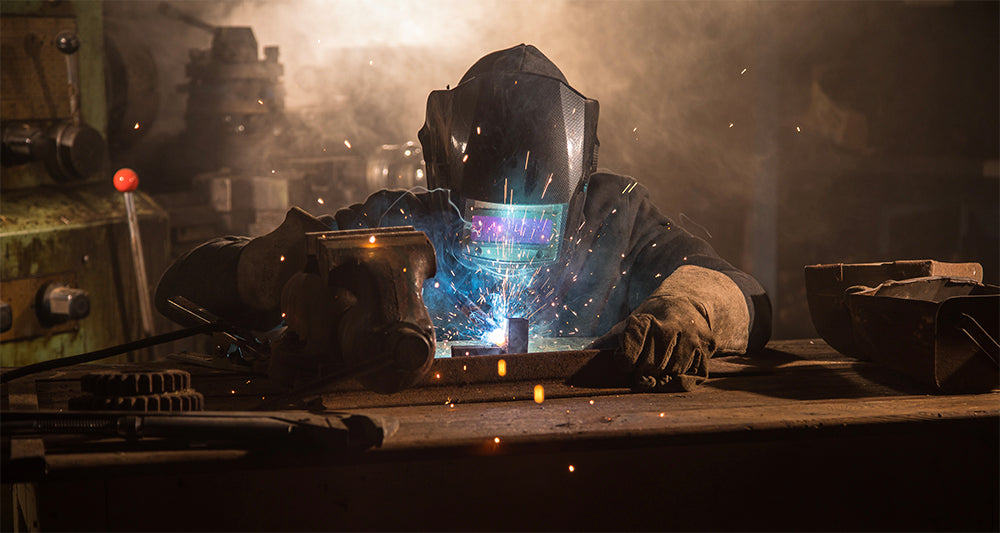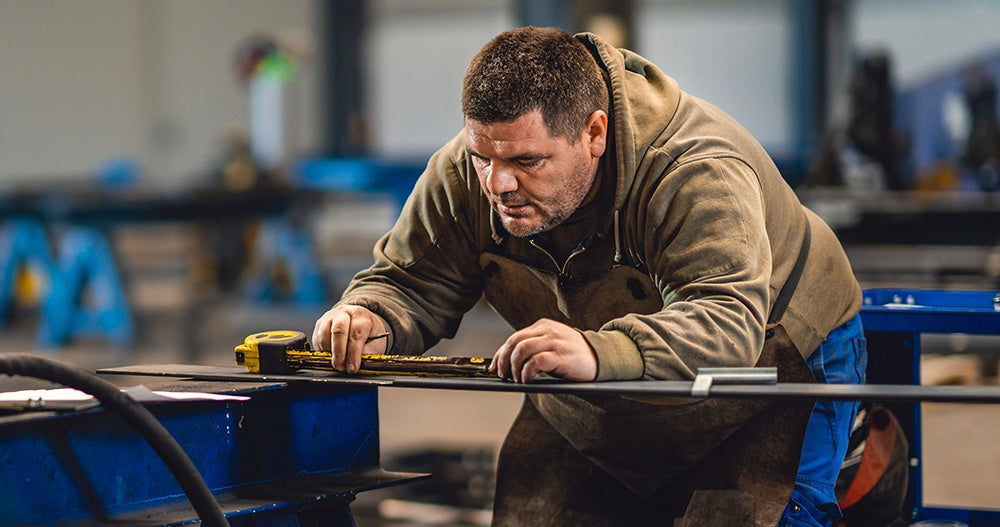Did you know welding helmets are not interchangeable between MIG and TIG welders? MIG welding helmets have features better suited to MIG welders and vice-versa with TIG welding helmets. Most welders don't know this when they're starting out, leading to pay for equipment that makes their job more complicated than it needs to be.
Choosing the right welding helmet is crucial for both safety and efficiency in your welding projects. Whether you're a seasoned professional or a beginner, understanding the distinct requirements of TIG and MIG welding can significantly impact your work quality and comfort. From considering the TIG Amperage Range to focusing on the Shade Ranges and the importance of Clarity and Contrast, each aspect plays a pivotal role in selecting the ideal helmet for your welding needs. The best welding helmet for each welder depends on the kind of welding they do and a few other factors, which we'll cover below.
TIG Amperage Range
For TIG welding, knowing a helmet’s TIG Amperage Range is essential before you purchase. It’s often not listed at the top of the web page, but if you’re using a site like Welding Supplies from IOC, you can click the “specs” tab to show you all the juicy details.

TIG welding often uses lower amps than MIG, which allows better heat management (one of the big benefits of TIG). However, most auto-darkening helmet sensors detect amps to determine when to darken. Let’s say your auto-darkening helmet has a TIG amperage range of >20 amps, but you’re welding on 10 amps. There’s a good chance the sensors won’t recognize the arc, meaning your helmet won’t auto-darken (making welding very, very difficult). That's why the best welding helmets for TIG have a lower amperage range.
So, to accommodate TIG welders, TIG welding helmets have a lower amperage range, such as the Lincoln Viking 3350, which has a TIG amperage range of >2 amps. That means that as long as you’re welding on more than two amps, it’ll work great.
Miller’s Digital Elite and Digital Infinity helmets have something called X-Mode. When turned on, the sensors aren’t triggered by amps but by a number of other factors that are more in line with low-amp TIG welding. This alone is why a lot of TIG welders prefer these helmets.
In order to produce a quality bead with MIG welding, you generally need more power (amps) than TIG. Because of this, the amperage range isn’t nearly as important. You’ll want to focus more on shade ranges (see below).
Shade Ranges
Every auto-darkening helmet has a range of possible shades, which basically determine how dark or light it will go when the sensors trigger.

Since MIG tends to use more amps, you want a specific MIG welding helmet with a good range of shades from light to dark. For instance, the ESAB sentinel has an excellent shade range from 5-13.
With TIG welding, your range will vary depending on your work. For instance, automobile welders tend to work on thin car panels where heat management is key. Using low amps means you’ll need a helmet with the appropriate shade range. Just remember that the higher the shade number, the darker the shade.
Clarity and Contrast
In the last five years, the ability of auto-darkening helmets to show color has far exceeded that of traditional welding helmets. There’s something really important to note, though: Yes, having more colors makes the view look nicer, but it also greatly increases the amount of contrast.
Contrast is how much difference there is between shapes and colors. Back when televisions were black and white, anything with a color appeared as a shade of gray. When Alfred Hitchcock shot the famous Psycho shower scene, he wanted something that would really stand out from the white bathroom walls and floor. Instead of red blood (that would just be a shade of gray on black and white television), he used chocolate syrup for the blood. The black liquid contrasted significantly with the white floor, making it much more striking.

Traditional auto-darkening helmets tend to have a hazy green filter, causing everything to run together. You have to really squint to make out the fine details of your welding pool. Sometimes, this doesn’t matter, like when laying down an easy bead. But you generally have to watch your work closely with both MIG and especially TIG. Having a clear view with a lot of contrast to help distinguish exactly what you’re looking at is a huge leg up.
For the best contrast and clarity, every top brand has recently developed its own technology. Miller has ClearLight, Lincoln has 4C, etc. While they are all different in the details, they all provide much better color, clarity, and contrast.
Find Welding Helmets and More at Welding Supplies from IOC
Welding Supplies from IOC offers a comprehensive range of welding helmets tailored to meet the specific demands of TIG and MIG welding. With options like the Lincoln Viking 3350 for TIG welding, which offers a lower amperage range, or the ESAB Sentinel, with its wide shade range for MIG, you will find the perfect fit for your projects. Additionally, innovations like Miller's ClearLight and Lincoln's 4C technology bring enhanced color, clarity, and contrast, further elevating your welding experience.
At Welding Supplies from IOC, we provide a vast selection of helmets and ensure each product has detailed specifications and expert insights. This enables you to make informed decisions, ensuring you invest in equipment that complements your welding style and needs. So, whether you're tackling intricate TIG welding tasks or robust MIG projects, Welding Supplies from IOC is your go-to destination for helmets that offer the perfect blend of safety, functionality, and comfort. Embrace the welding journey with the right gear and witness how the right equipment can transform your experience.
Ultimately, which helmet you choose should depend on your work. If you’re welding low-amp TIG, make sure you get an auto-darkening helmet that’ll still work. You can find the best auto-darkening welding helmets, MIG welding masks, and other premium equipment at Welding Supplies from IOC. Learn more here and check out a few of our favorite welding helmets below.





